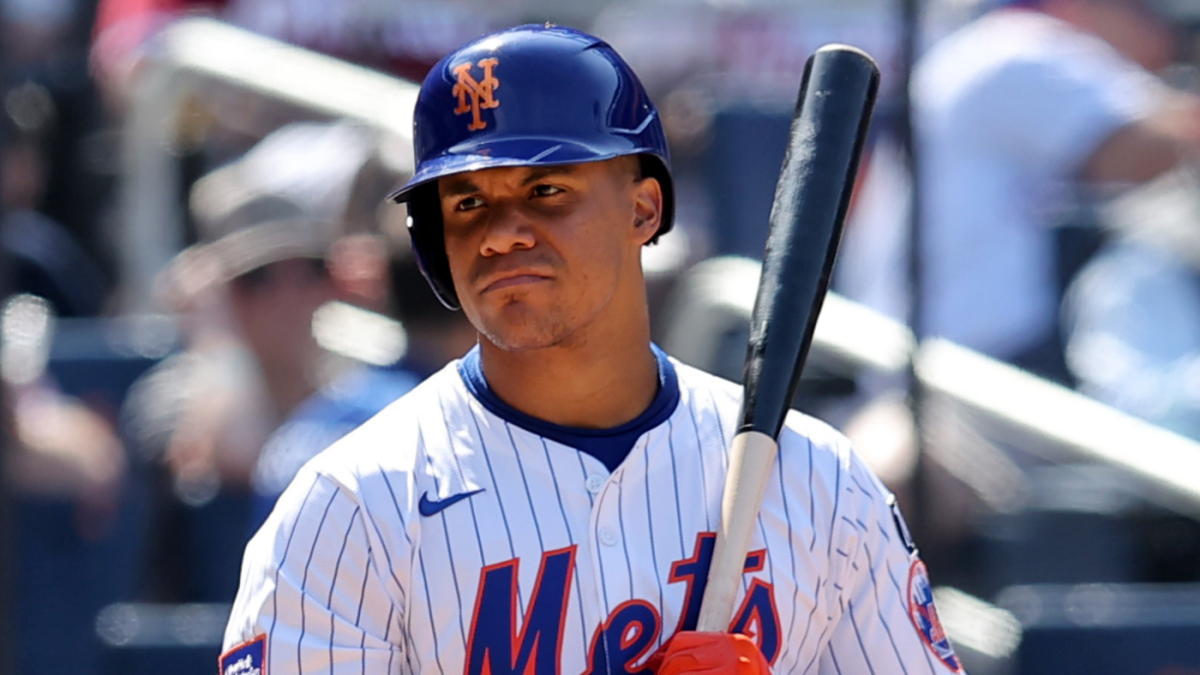Juan Soto’s Early Struggles with the Mets: Navigating the Weight of Expectations
—
Unpacking the Pressure Cooker: What $765 Million Means for Soto
When the New York Mets inked Juan Soto to the staggering 15-year, $765 million deal ahead of the 2025 season, they weren’t just buying a player—they were buying hope, star power, and a seismic shift in the city’s baseball narrative. This contract, the largest in professional sports history, instantly catapulted Soto into a spotlight intense enough to dazzle and daunt simultaneously. The sheer magnitude of expectations created an environment where every swing, every at-bat, and every base running decision was analyzed under a microscope.
Soto’s decision to choose the Mets over the Yankees—rejecting a slightly shorter, yet similarly massive offer—added fuel to an already roaring rivalry fire. His first encounters back in Yankee Stadium, met with hostile crowds and underwhelming personal stats, underscored how external pressures were not just about contracts but about identity, loyalty, and the theater of New York baseball. This backdrop layers complexity onto his performance struggles, making them about more than just numbers.
Bat Speed Decline: The Hidden Story Behind the Slump
Statcast data lights up the first major red flag: a 2 mph decline in Juan Soto’s bat speed compared to the previous season. While seemingly minor, this drop is significant in the realm of baseball biomechanics. Bat speed is a direct barometer of a hitter’s power potential and contact quality—the engine behind home runs and clutch hits. A slower bat speed usually translates into weaker contact and diminished run production.
Several factors could be at play: fatigue, injury, tweaks in batting mechanics, or even mental distractions. What’s telling is that Soto is not alone; several Mets players show similar dips, suggesting possible systemic issues such as training regimens, team conditioning, or even league-wide pitching adjustments targeting these hitters. This element adds a layer of complexity beyond individual fault, pointing to environmental and physiological contributors.
Situational Hitting and Confidence: A Star’s Flailing at Crucial Moments
Beyond physical metrics, Soto’s clutch hitting has faltered dramatically. His 1-for-20 performance with runners in scoring position starkly contrasts with his career reputation as a reliable, even fearless, hitter in pressure scenarios. This slump impacts more than personal batting averages; it influences team momentum and morale, especially in a lineup depending heavily on his production.
Moreover, his failure to reach base safely in recent key plate appearances highlights a possible mental block or approach flaw rather than just bad luck. Confidence is a subtle yet powerful psychological driver in sports, and its erosion can feed into the physical performance decline. Soto’s struggles in these moments might hint at the need for mental conditioning and strategic adjustments.
Hustle and Engagement: Fractures in the Mets’ Chemistry?
Perhaps the most contentious issue surrounds Soto’s hustle and engagement. Media narratives have questioned his apparent reluctance to fully commit physically during plays—slow exits from the batter’s box, less aggressive baserunning—and this perception has sparked fan criticism and locker room whispers. Although Soto denies “lollygagging,” the attention itself threatens to fracture team unity and tarnish his reputation.
For a superstar, maintaining clubhouse harmony while delivering consistent effort on the field is a delicate balance. The Mets face the challenge of addressing hustle concerns without alienating their marquee player, aiming to foster both accountability and support.
Front Office Reactions and Managerial Strategies
Within the Mets organization, unease is palpable. Executives have voiced disappointment over what they term “miserable” performances and signs of detachment. Public statements about ongoing discussions with Soto on effort and attitude signal a willingness to confront problems head-on, albeit cautiously.
Manager Carlos Mendoza’s approach seems measured—open about the need for dialogue but intent on preserving Soto’s confidence. This leadership style acknowledges the superstar’s value while striving to instill a culture of responsibility. The executive and managerial challenge is to recalibrate Soto’s mindset without undermining his stature, a nuanced task in a high-pressure environment.
Broader Team Impact and Long-Term Vision
Despite Soto’s individual woes, the Mets continue to lead the National League East, underscoring that his presence has still contributed positively, whether through strategic contributions or intangible leadership qualities. The organization is reportedly viewing Soto’s early-season challenges through a long-term lens, recognizing the value of patience and adaptation given the unprecedented length and size of his contract.
This approach also highlights the evolving nature of baseball contracts and the shifting dynamics between individual superstar identity and team cohesion. The investment goes beyond mere statistics, encompassing communal pride, marketability, and civic involvement, threading Soto’s saga into the broader mosaic of New York’s baseball culture.
Looking Ahead: Embracing Complexity and Hope
Juan Soto’s bumpy start with the Mets illustrates the multifaceted pressures and realities accompanying colossal sports contracts in today’s game. Declines in bat speed, situational slumps, and questions about hustle are not isolated problems but symptoms of a complex intersection of physical, psychological, and social factors.
As the Mets work to harness Soto’s immense talent back to its expected heights, the narrative reminds fans and analysts alike that megastar careers are rarely linear or straightforward. The key storyline now lies in Soto’s ability to adjust, overcome distractions, and channel his prodigious skills toward team success.
Conclusion: Defining Legacy Beyond Early Struggles
The early season challenges faced by Juan Soto with the Mets are a vivid chapter in a storied career marked by high stakes and unparalleled expectations. Navigating the immense pressures of a historic contract, intense rivalry scrutiny, and internal team dynamics requires resilience and adaptability.
Ultimately, Soto’s journey will be measured by how he rises from this foundational turbulence—whether he can recalibrate both physical mechanics and mental approach to transform warning signs into a renaissance. The narrative of the $765 million man remains unwritten, with potential for both redemption and redefining the relationship between superstar athletes and their monumental contracts.











